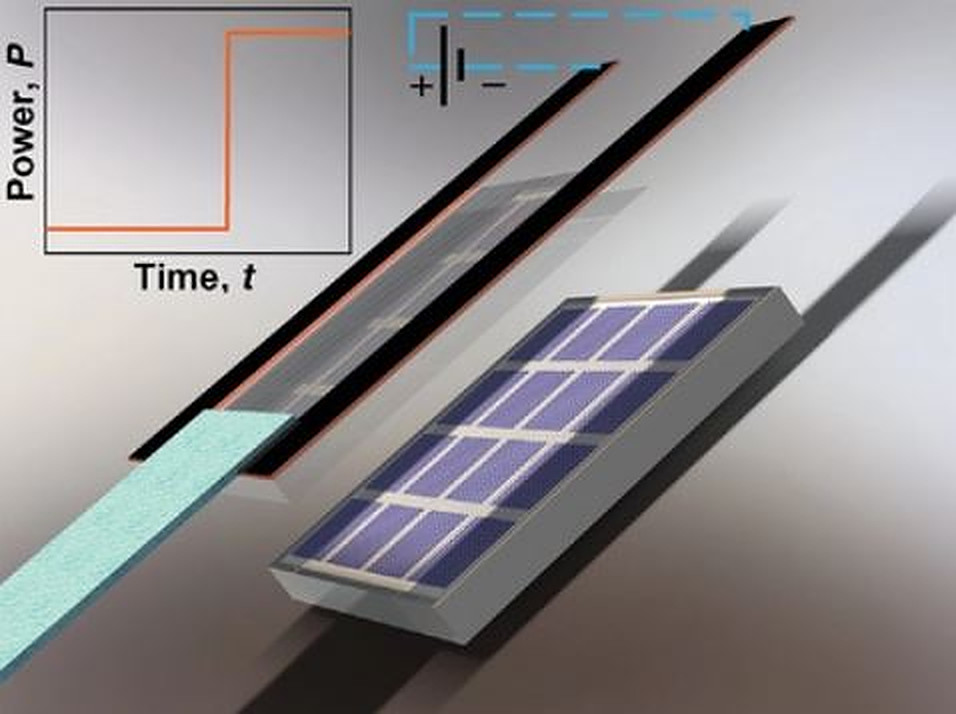Scientists from the University of Illinois Urbana-Champaign have developed a multifunctional coating material to remove snow, frost and ice from PV modules by using “pulsed Joule heating,” which is the physical effect by which the passage of current through an electrical conductor produces thermal energy.
Compared to Joule heating alone, which would be too energy-dependent for the viability of the proposed technology, pulsed joule heating drastically reduces energy consumption and the time needed for desnowing, defrosting, and deicing.
“We tested the system on a lab-scale prototype where we used a solar simulator to simulate the sunlight, and we attached the solar cell to a low-temperature chiller and a humidifier to simulate the outside icing/snowing condition,” researcher Siavash Khodakarami told pv magazine. “The cost of the technology was not evaluated in our work. But we have studied the benefit of using this method rather than just leaving the snow on solar cells by themselves to melt over time.”
The scientists applied superhydrophobic (SHP) coating on the module glass, through a method that they describe as simple and ultra-scalable. They initially deposited a nanoscale-thick aluminum (Al) layer on the cover glass, followed by immersion in hot deionized water to create aluminum oxyhydroxide (AlO(OH)) nanostructures.
“The density and porosity of the nanostructures can be modified by varying the immersion time and temperature during fabrication,” they explained. “We chose the conditions used in order to achieve higher superhydrophobicity and minimized droplet–surface adhesion.”
The film becomes optically transparent after hydrothermal treatment. And as the surface roughness remains lower than 30 nm, it does not cause visible light scattering.
“The combination of optical transparency and superhydrophobicity in the same coating allows for multi-functionality to enable pulsed Joule heating for desnowing and defrosting on PV panels,” the researchers said. “For desnowing of PV panels, the cover glass needs to be capable of efficient pulsed surface heating, superhydrophobicity, and optical transparency.”
Indium tin oxide (ITO) was used as a layer for Joule heating, due to its remarkable optical transmittance of more than 85%, as well as certain electrical characteristics. The thin-film heater with a superhydrophobic surface acts at the interface of the substrate and snow/frost/ice and is said to achieve interfacial defrosting by confining the heat to a very thin region.
Through a series of tests, the academics found that pulsed Joule heating is divided into three different regimes of interfacial desnowing/defrosting, partial melting, and refreezing, depending on the energy input, pulse width, and inclination angle of the surface. The claim their new technique can remove snow and ice at a rate that is three times faster than convetional approaches.
“Our method only requires a single pulse of electrical current for heating the surface to completely remove accreted snow, frost, or ice,” they said.
The scientists introduced the technique in “Enabling Renewable Energy Technologies in Harsh Climates with Ultra-Efficient Electro-Thermal Desnowing, Defrosting, and Deicing,” which was recently published in Advanced Functional Materials.
“We are continuing the work to make it a possible commercial product for solar cells and other applications as well,” Khodakarami said.
This content is protected by copyright and may not be reused. If you want to cooperate with us and would like to reuse some of our content, please contact: editors@pv-magazine.com.









By submitting this form you agree to pv magazine using your data for the purposes of publishing your comment.
Your personal data will only be disclosed or otherwise transmitted to third parties for the purposes of spam filtering or if this is necessary for technical maintenance of the website. Any other transfer to third parties will not take place unless this is justified on the basis of applicable data protection regulations or if pv magazine is legally obliged to do so.
You may revoke this consent at any time with effect for the future, in which case your personal data will be deleted immediately. Otherwise, your data will be deleted if pv magazine has processed your request or the purpose of data storage is fulfilled.
Further information on data privacy can be found in our Data Protection Policy.